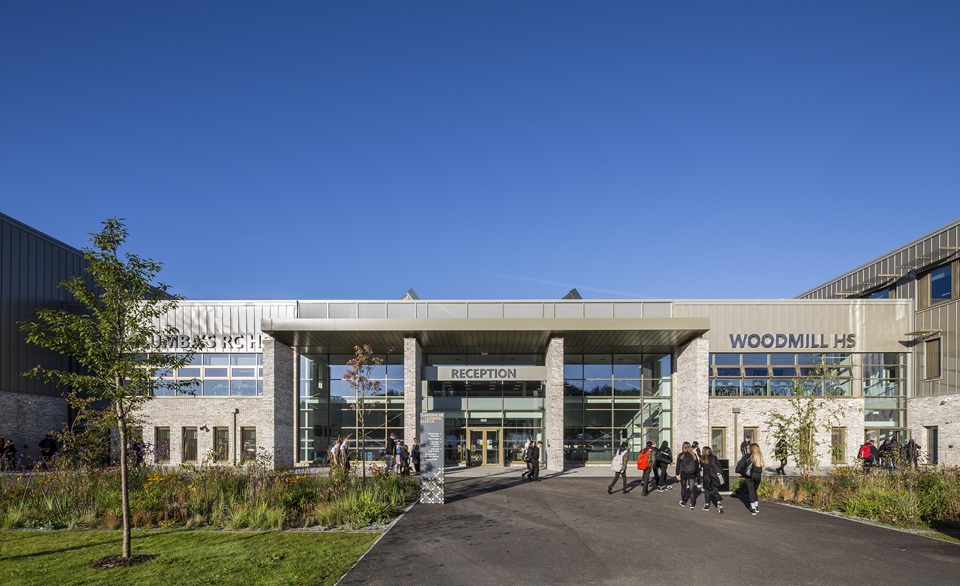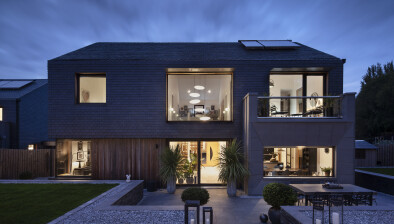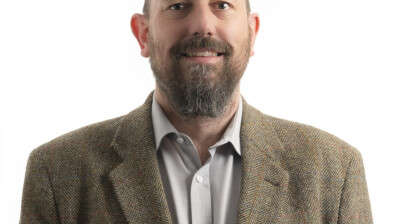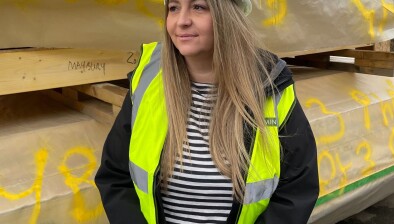Jamie Gregory: Scotland goes large with Passivhaus

Jamie Gregory
Jamie Gregory, associate director and certified Passivhaus designer at AHR, shares insights from the architecture and building consultancy practice’s recent Passivhaus projects for Scotland’s upcoming Passivhaus Equivalent policy.
The Scottish Government’s Passivhaus Equivalent policy is out for its second consultation later this year. While details are still being finalised, it is clear that the policy is helping to focus the industry on what matters — delivering buildings that are well-built and perform as intended. By closing the performance gap, Passivhaus delivers comfortable, healthy, and energy-efficient places that ensure long-term value.
At AHR, we’ve seen the benefits of this approach first-hand through our work on the Woodmill and St Columba’s RC High School project in Dunfermline (WSC) - the largest certified Passivhaus education project in the world – as well as a growing portfolio of Passivhaus-standard residential, educational, civic, and community buildings across the UK. For example, our 1 – 21 St Cuthberts social housing project in Bonnyrigg for Midlothian Council also achieved certification, while our Caledonia High School and Templehall Community Hub projects for Fife Council are currently on site and targeting Passivhaus certification.
Key lessons
- From mega schools to homes
Schools, homes, and community buildings all work in very different ways. A school may be busy during the day but quiet at weekends, while a community hub might see activity well into the evenings. Homes need to perform consistently around the clock.
What’s encouraging is how well the Passivhaus standard adapts across these building types. At Templehall Community Hub, the approach will support a highly active civic space, while Caledonia High School shows how it can scale to a large education setting. Projects like 1 – 21 St Cuthberts prove that the same principles can deliver comfortable homes.
The key takeaway is that Passivhaus is not limited to one sector. Its flexibility means it can support Scotland’s ambitions across everything from large schools to homes.

Woodmill and St Columba’s RC High School in Dunfermline (Image: Keith Hunter)
- Early-stage design
Orientation and form factor are low-cost, high-impact design choices that can unlock easier delivery of Passivhaus performance. For example, WSC’s overall building scale enabled a low form factor, helping keep specification requirements down. By contrast, Templehall Community Hub’s site constraints and need for a single-storey layout created a less efficient envelope, meaning additional insulation, and improved thermal bridge mitigation were required to achieve the standard.
The lesson? Passivhaus needs to be integrated into the architectural design from the start and cannot be a ‘bolt-on’. Making the right early-stage decisions will save time, money, and design complexity later. However, as the contrast between the WSC project and Templehall Community Hub shows, Passivhaus can be adapted for all site conditions and briefs.
- Absolute targets
The success of Passivhaus in Scotland’s school sector is in part due to the Scottish Futures Trust’s Learning Estate Investment Programme (LEIP). Its funding model is based on absolute performance targets (such as space heating demand measured in kWh/m²/year), rather than the notional targets currently used in SAP and Scottish Building Standards.
Central to achieving these targets is the Passivhaus Planning Package (PHPP) — a detailed energy modelling tool that allows designers to understand how every design choice, from glazing ratios to ventilation strategy, will affect performance. Unlike compliance tools that rely on notional benchmarks, PHPP measures predicted performance in absolute terms, providing a clear line of sight between design intent and operational outcomes. It also enables design teams to test scenarios early and adjust the building form, fabric, and services to ensure targets can be met.
Absolute targets give a clear, measurable benchmark for building performance. This approach aligns with the Passivhaus Trust’s recommendations and is supported in the Scottish Passivhaus Equivalent Working Group Consensus Report.
By embedding absolute targets into policy, and by encouraging the use of robust modelling tools like PHPP, Scotland can ensure that performance is measured by what actually matters — how much energy the building uses in reality.
- Knowledge sharing & continuous improvement
Every Passivhaus project undertaken in Scotland strengthens the construction industry’s ability to deliver better outcomes. Through close collaboration with project teams and the supply chain, we’ve built a continuous feedback loop that allows us to streamline processes and embed Passivhaus principles across all project types.
We are also seeing the evolution of construction methods. More recent schemes, such as Caledonia High School, are being delivered with steel frames — the preferred approach of Tier One contractors. This demonstrates that Passivhaus principles can adapt to commercial realities, while still achieving rigorous performance standards.
Scotland’s construction industry is learning quickly and taking pride in delivering to higher standards. If Scotland can deliver Passivhaus across schools and community hubs, then it can certainly deliver simple and affordable Passivhaus housing at scale.
Scotland’s leadership
Scotland is showing real leadership by embedding performance-led thinking at the heart of its built environment strategy. Passivhaus — with its reliance on absolute targets, its use of the Passivhaus Planning Package (PHPP), and its rigorous quality assurance — is the most effective methodology available.
It’s an exciting time for Scotland, and we’re proud to be part of shaping this future.














